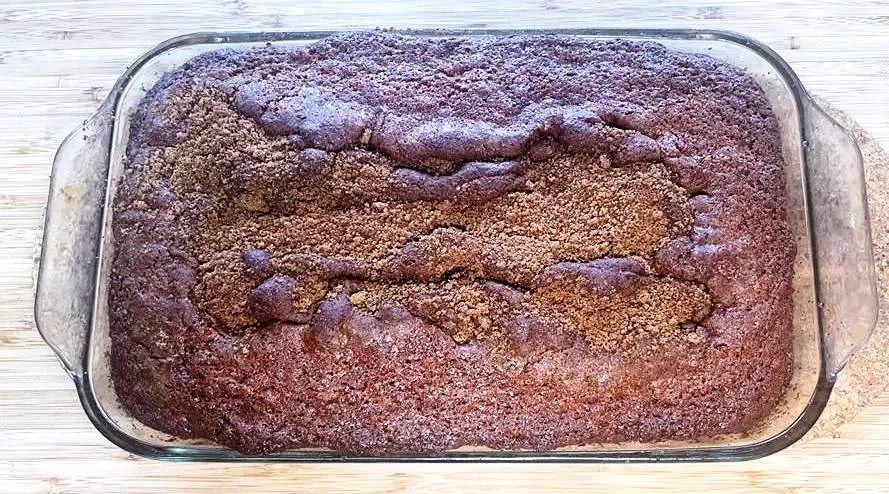
Amish Friendship Bread
Amish Friendship Bread is made from a sourdough starter. The starter is a yeast substitute that is essentially a live fermented culture. With the proper care, sourdough starter can last indefinitely. You can make a sourdough starter from flour and water, but I used this Amish Friendship Bread Starter Recipe using milk, yeast, water, flour, and sugar. Here’s how I made mine and turned it into some delicious sweet bread.
Equipment
- 1 Glass Bowl
- 1 Wooden spoon
- Measuring cups
- 1 Sharpie
Ingredients
- 1/4 cup warm water
- 1 package (2 1/4 teaspoons) Active dry yeast
- 1 cup all-purpose flour
- 1 cup granulated sugar
- 1 cup whole milk
Instructions
Amish Friendship Bread Starter
- First, write your directions on the Ziploc bags with a Sharpie.This makes it easier later on! If you don’t want to use a baggie, you can always make the starter in a glass jar or shallow bowl with a loose cover.
- Pour warm water into a small glass bowl.
- Sprinkle the yeast over the water and allow it to proof for 5 to 8 minutes.
- In another bowl, mix together your flour and sugar.
- Pour in the milk and stir well.
- Blend in your yeast mixture.
- Cover loosely and allow the mixture to stand until it gets bubbly.
- Pour the contents into your prepared baggie and seal it tightly so it doesn’t spill. Keep the sourdough mixture at room temperature but out of direct sunlight. This is day 1.
- Day 2. Squeeze or massage the bag to mix it up. My bag was full of gas as the starter fermented. Just open the bag, let the air out, and seal it up again as often as needed.
- Day 3. Squeeze the bag to mix it up.
- Day 4. Squeeze the bag to mix it up. My bag got a little bit wet on the outside and the ink came off on my countertop. Try to keep your bag dry or set it on a paper towel if you are worried about this happening to you.
- Day 5. Squeeze the bag to mix it up.
- Day 6. It’s time to feed your starter so it can keep on growing.In a glass bowl, mix up 1 cup of flour, 1 cup of sugar, and 1 cup of milk. Then pour it into your plastic bag. Squeeze the bag to mix it up.
- Day 7. Squeeze the bag to mix it up.
- Day 8. Squeeze the bag to mix it up.
- Day 9. Squeeze the bag to mix it up.
- Day 10. It’s time to feed and divide the starter.
- Pour your starter into a glass bowl. Add ½ cup flour, ½ cup sugar, and ½ cup of milk. Mix it all well with a wooden spoon. You will get 4 to 6 servings of starter from this bag.
- Write the directions on new bags and place 1 cup of starter mixture in each one. This becomes day 1. Seal well and pass them along to friends! Make sure to keep one bag for yourself to grow a new starter.
- You can begin baking with your starter if you don’t want to give away the bags. You can also freeze any unused bags. You should be able to thaw the bags, allow them to return to room temperature, and begin feeding again if desired.
Tips on NurturingYour Friendship Bread Starter
- Don’t use metal utensils or bowls.
- You may want to write the date of Day 1 on the front of the bag so you don’t forget what day it is.
- Be careful to keep the outside of the bag dry so the writing doesn’t come off on your countertop.
- If gas fills your bag, you can just ‘burp’ it and let it out. Make sure you keep the bag sealed tightly so it doesn’t spill.
- Remember to keep your growing starter at room temperature.
- Your starter should be bubbly and ‘active’ – if it isn’t, you might try giving it an extra feeding to give it a jump start. If you are storing your starter close to a window, sunlight or cold air can make it unpredictable. Generally, a nice warm counter is the best place to keep it safe. Starters are hard to kill and most of the time they can be resurrected if they aren’t bubbly enough.
- Your starter will have a fermented smell, but it shouldn’t smell rancid or look an off-color. If that happens, you’ll want to dump it and start again.
Tried this recipe?Let us know how it was!